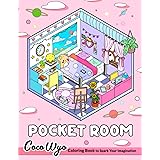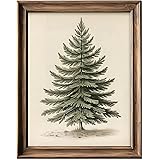Concealing Outlets for Visual Continuity
Visible electrical outlets frequently disrupt a kitchen’s aesthetic flow. They are often positioned at eye level, becoming an immediate focal point. This creates visual clutter and diminishes perceived value.
Strategic concealment of these utility elements is recommended. Everyday decor items effectively mask outlets. Wood cutting boards, for instance, are easily leaned against backsplashes. Artwork also provides an elegant solution when placed judiciously.
Botanicals in vases offer both concealment and natural beauty. Decorative boxes, utilized for organization, can add necessary height. These styling opportunities enhance overall kitchen aesthetics, promoting a cleaner, more streamlined appearance. A designer kitchen look is thus achieved through thoughtful placement.
Upgrading Cabinet Hardware for Ergonomic Elegance
The tactile experience of kitchen cabinetry significantly impacts perceived luxury. Slamming cabinet doors often suggest lower quality construction. Conversely, soft-close hinges provide an immediate sense of refinement.
These hardware upgrades are budget-friendly and DIY-accessible. Existing hinges can be replaced in minutes. This modification introduces a luxurious feel to current cabinetry. Such ergonomic improvements contribute substantially to a high-end experience.
Soft-close mechanisms also reduce noise pollution. Furthermore, they protect cabinet frames from impact damage. The overall perceived value of the kitchen is greatly enhanced through these small adjustments. This is a vital step for any budget kitchen upgrade.
Integrating Architectural Details with Cabinet Trim and Molding
Flat, unadorned cabinet panels often lack visual interest. Adding trim and molding introduces architectural depth. This simple modification can create a bespoke, custom-built appearance.
Side panels of cabinets or kitchen islands are ideal candidates for this treatment. Molding applications finish these surfaces impeccably. Furthermore, cabinet doors themselves can be enhanced with trim details. This alters the door’s style, adding visual complexity.
For example, a basic shaker door gains decorative appeal. A fresh paint or stain job completes the transformation. This technique avoids the expense of new cabinetry, fostering a unique designer kitchen look.
Strategic Styling: Food as Functional Decor
Food items, when thoughtfully arranged, transcend mere utility. They become decorative elements, imparting warmth and inviting ambiance. This practice enriches the kitchen’s sensory appeal.
Seasonal fruits, such as lemons in summer or apples in autumn, provide vibrant color. Freshly baked goods or artisanal bread loaves create a homey atmosphere. These elements are best displayed in elegant vessels, like wood or ceramic bowls.
This approach transforms countertops into curated vignettes. It contributes to a sophisticated kitchen aesthetic. The kitchen space feels more integrated and personal. Fresh produce makes a kitchen look expensive without excessive spending.
Cultivating Decorative Zones and Visual Breaks
Leaving intentional space for decor is paramount. This prevents clutter and enhances a room’s spaciousness. A well-designed kitchen incorporates decorative elements harmoniously.
Trays and curated groupings ensure decor appears intentional. They provide structure, preventing items from looking haphazard. Vertical spaces, such as open shelving, are ideal for display.
In certain layouts, removing a single cabinet door can create an open display area. This adds visual breathability. Such deliberate spatial aesthetics contribute significantly to a luxurious feel. It is a key principle for achieving a refined designer kitchen look.
The Transformative Power of Paint
Paint offers an incredibly cost-effective method for visual impact. A kitchen’s entire design can be altered by a wall color change. The right hue introduces warmth and modernity.
Painting only the kitchen island provides an accent. Alternatively, lower cabinets can be painted a different color. This two-tone approach creates a trending design element. It makes the space appear intentionally designed.
Paint provides an opportunity for personalization. It revitalizes existing surfaces without replacement. The strategic application of color greatly enhances kitchen aesthetics. This budget kitchen upgrade is highly impactful.
Incorporating a Kitchen Island for Enhanced Functionality
A kitchen island serves multiple purposes in a designer kitchen. It adds significant storage capacity. Furthermore, it provides additional serving and worktop space. Islands improve workflow and aesthetic appeal.
For kitchens with ample open space, an island enhances flow. It becomes a central focal point. A fully custom island is not always necessary. Mobile carts or small, removable islands offer similar benefits.
These options provide extra storage and counter space. They contribute to a more functional kitchen layout. An island can effectively complete an otherwise empty space. It helps make a kitchen look expensive by optimizing utility.
Optimizing Kitchen Organization for Perceived Luxury
An organized kitchen communicates a sense of order and high-end design. Clutter, conversely, detracts from any luxurious impression. Organized interiors are essential for a truly sophisticated space.
Focus should be placed on pantry, drawers, and cabinets. Baskets, jars, and containers streamline pantry contents. Drawer dividers maintain utensil order. Items should be purged to minimize excess.
This internal optimization significantly enhances the kitchen’s feel and function. It provides peace of mind and reduces visual stress. A decluttered space inherently projects elegance. This functional elegance is crucial for a designer kitchen look.
Art Integration: Elevating Kitchen Aesthetics
Artwork is often overlooked in kitchen design. However, its inclusion immediately elevates the space. Art pieces introduce personality, color, and focal points.
Small art pieces can be leaned against a backsplash. This creates a casual yet sophisticated vignette. Hanging art in various kitchen areas also adds interest. Above the range hood is an unexpected, yet impactful, location.
Intentional placement of art contributes to a curated designer look. It allows for personal expression within the kitchen environment. The integration of art significantly enhances overall kitchen aesthetics. This strategy aids in making a kitchen look expensive.
Achieving a sophisticated designer kitchen look is entirely attainable without extensive renovations. The cumulative effect of these budget kitchen upgrades transforms any space. Implementing these strategic interventions will make a kitchen look expensive and custom-designed.











